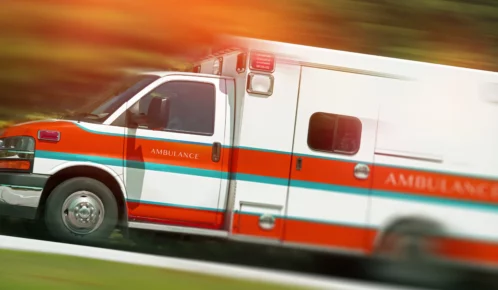An experienced trip and fall lawyer can help plaintiffs understand how to prove negligence in a trip and fall case. Proving negligence in a trip and fall requires that the plaintiff first show that the defendant owed the plaintiff a duty of care. Typically, the duty of care is to act as a reasonably prudent person under the circumstances. Next, the plaintiff must prove that the defendant failed to meet his or her duty of care and that the plaintiff suffered from an injury. Finally, to prevail on a trip and fall negligence claim, the plaintiff must show that the defendant’s breach caused the plaintiff’s trip and fall injury.
Table of Contents
Trip and fall cases fall under the umbrella of premises liability cases. Victims must prove they suffered an injury due to a dangerous condition being present on a property. Victims must also prove property owners knew or should have known, of the dangerous condition, and negligently failed to repair or provide warning to potential victims. This knowledge, or notice element, can make it difficult for victims to win trip and fall cases. Victims need an experienced trip and fall lawyers who know how to efficiently investigate and litigate premise liability cases.
How to Prove Negligence in a Trip and Fall Case
Proving negligence in a trip and call case requires that the victim show:
- Duty of Care. The defendant owed the victim a duty of care to act as a reasonably prudent person under the circumstances.
- Breach. The defendant breached the duty of care.
- Injury. The plaintiff suffered from an injury.
- Causation. The defendant’s breach of duty caused the plaintiff’s injury.
To prove a breach of duty in a case of a slip and fall at a store, you would need to prove that the store workers did not meet their duty. You might argue that a reasonably prudent store worker would post “Wet Floor” signs near a wet spot on the floor. A slip and fall attorney may help you investigate and locate evidence you can use in your trip and fall negligence case.
Damages You May Receive After Proving Negligence in a Trip and Fall Case
Generally, there are three types of personal injury damages you may receive after successfully proving negligence in a trip and fall case. They fall under the categories of economic, non-economic, and punitive damages.
Economic damages compensate you for the financial burden of a trip and fall injury. Economic damages include payment for medical bills, lost wages, lost earning capacity, and other accident-related expenses.
Non-economic damages serve to provide you relief for the human cost of a trip and fall injury. They compensate you for the invisible harms you experienced, such as pain and suffering and loss of quality and enjoyment of life.
Finally, punitive damages are generally only appropriate where the defendant’s conduct was intentional, reckless, or egregious. Rarely awarded, punitive damages serve to punish the defendant in this case and deter future harm.
Evidence in a Trip and Fall Negligence Case
Illinois law requires a victim to prove their case by a preponderance of the evidence. Trip and fall cases are fact-dependent. If a victim is unable to prove how long the hazardous condition was present or that the owner had knowledge of the condition, the victim’s chances of winning are reduced. Eyewitness testimony is useful because witnesses can describe the dangerous condition and how long it was present. Photographs can demonstrate the obvious nature of the hazardous condition. Video footage can be strong evidence of how long the hazardous condition was present on the property. Maintenance records document how often the property owner performs maintenance.
A victim has a better chance to win an injury case if he or she obtains evidence of the property owner’s negligence. Trip and fall accidents occur in a variety of settings, such as private residences, commercial properties, private businesses, and public buildings. Some settings offer more evidence than others. Evidence typically includes eyewitness testimony, medical records, and photos of the scene. Some properties are equipped with video surveillance systems. Many commercial properties also have maintenance and custodial staff, which means they usually keep maintenance records. A trip and fall attorney can use this evidence to prove negligence.
How Can Evidence Help Defeat Legal Defenses?
A defense that property owners typically assert is a lack of knowledge or that they could not have discovered the condition during a routine inspection. Evidence of a property owner’s negligence can defeat these defenses. It is more difficult for property owners to argue a lack of knowledge if surveillance footage, photographs, eyewitness testimony, or maintenance records indicate that a dangerous condition was present for a long period of time. This evidence can also demonstrate the obvious nature of the dangerous condition and can defeat the defendant’s assertion that he or she could not have discovered the condition.



